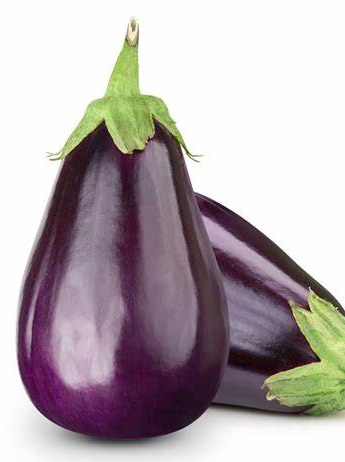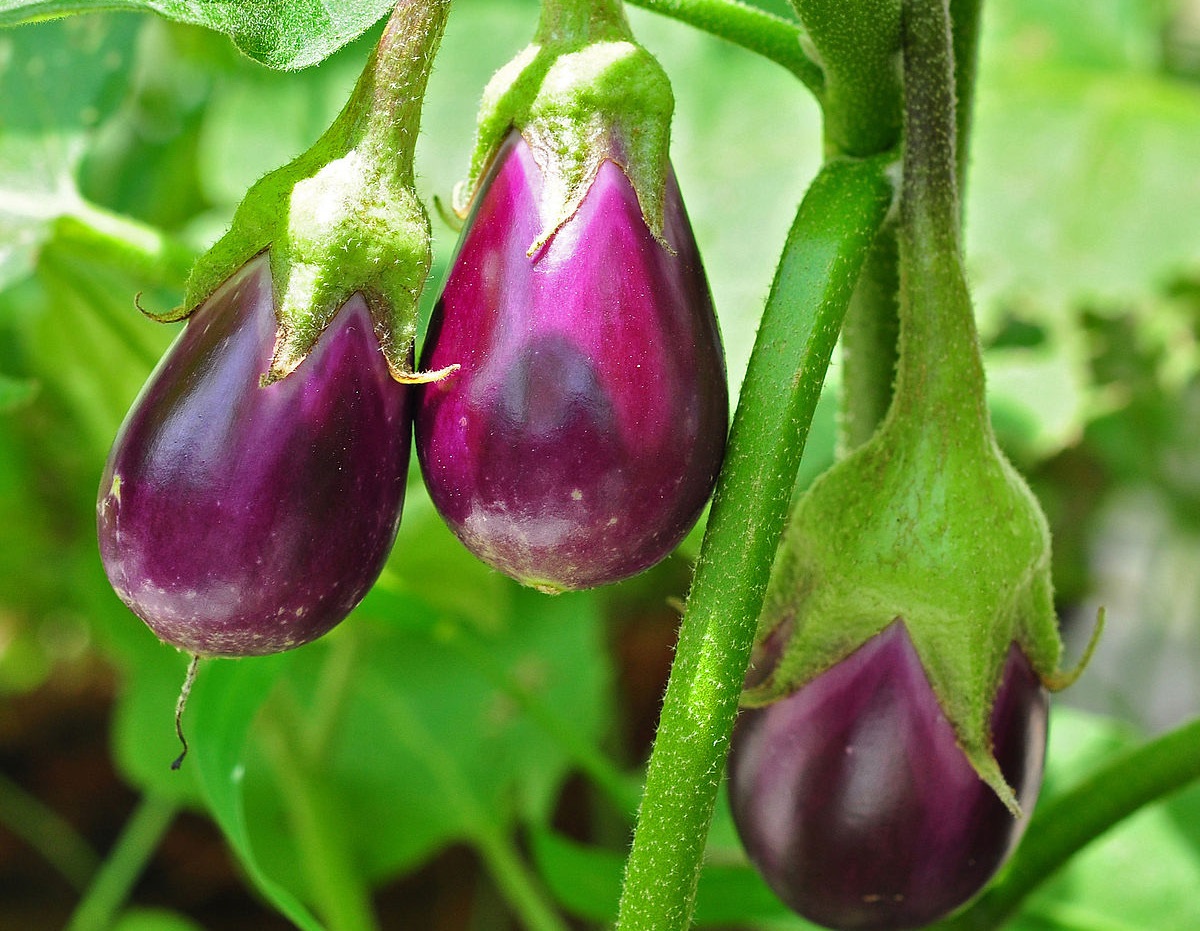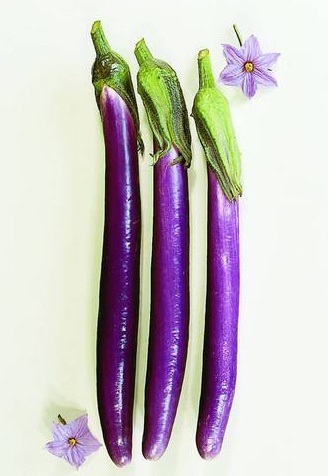
| What is Flavor and Fortune? |
| How do I subscribe? |
| How do I get past issues? |
| How do I advertise? |
| How do I contact the editor? |
Read 13193221 times
Connect me to:
| Home |
| Articles |
| Book reviews |
| Letters to the Editor |
| Newmans News and Notes |
| Recipes |
| Restaurant reviews |
| Article Index (all years, slow) |
| List of Article Years |
| Article Index (2026) |
| Article Index (last 2 years) |
| Things others say |
| Related Links |
| Log In... |
| Authors |
| Categories & Topics |
Eggplant: Hated Is Now Loved
| by Jacqueline M. Newman |
Vegetables and Vegetarian Foods
Winter Volume: 2019 Issue: 26(4) pages: 21 to 23
This vegetable’s nature, the Chinese say is cooling and sweet. Many believe it came to China from Southeast Asia, specifically where, seems people do not agree.
Overall, Chinese prefer long thin ones and seen on page 23 they call them ‘Japanese eggplants’. They eat them often, still ask many questions about them, and the most frequent is: “Is it really a fruit?” The answer is yes.

Some say it came to China during the Tang Dynasty (618 - 907 CE), but Sui Tang Yi, a prominent writer, called it kun lun tzu kua meaning ‘Malayan purple melon.’ Did he believe it came from Malaysia? There are those who say it came from Cambodia, Thailand, or somewhere else in Southeast Asia; few believe it came from China or Japan.
In most of Asia, they call the long thin ones ‘Asian’ or an ‘Oriental’ eggplant. Not so China, they call the one they like best and grow most often as the ‘Japanese eggplant.’ Neither round nor fat as the one shown on this page is called an Itlaian eggplant. The Chinese call them Japanese eggplants. They have the same purple/ black exteriors, and they also grow ones with green or white exteriors. We have never seen a fat one growing in China in any of our seventeen trips there. That amazes me as they grow so many other varieties from those small as cherries to the thin ones they call ‘Japanese.’ The Italian type can weigh about up to three-pounds each. In China and most of Asia, eggplants are cooked as vegetables, never eaten raw as most fruits are.
Some believe the Chinese spread this variety to many Asian countries including Japan and Korea. They call it ‘chia’ which is close to the Cantonese pronunciation of ch’ieh, and close to the Thai name of khia. In one source, we read it came to China by way of India, then went on to North and South America, but we do and did not believe that. We also read that in Sanskrit and modern Indian languages, it is better known as vatingana meaning ‘belonging to the windy class.’ That idea is associated with madness, and may be why some say eating one can make you mad.
We also read that in the seventh century when it reached Iran, they called it badinjan and did not always love it. Was it because it was black and bitter, the color like a scorpion’s belly, the taste like its sting? However, in Southeast Asia, many like bitter flavors so why did that bother them?
When the eggplant got to Balkan countries, it was called the ‘lord of vegetables’ and was better appreciated there. Maybe they shared their eggplant thoughts with Russians who called it baklazhan? Did they wonder if there was a connection with the Italians whose name was closer to theirs and is melanzana? Did they think it sounded like ‘crazy’ or mela insana meaning ‘crazy apple?’.
In its many travels, many people thought this fruit not healthy because one Pope’s doctor wrote “they are hard to digest, generate headaches and melancholy, even cancer or leprosy. These notions did not help their image nor their acceptance. Maybe this is why they were never sold well in Paris after a French doctor to the Pope said what he said. However, that fear did not last long nor was it accurate. When the Spanish and Portuguese brought its seeds to the Americas, they quickly became popular there. Was this because there were many Italians already living there?
In the US, few knew that Thomas Jefferson had them growing in Monticello. His African slaves gave him their seeds and planted them for him as they did okra, watermelon, black-eyed peas, and other vegetables. Did you know his people called them ‘guinea squash?’ That was published in The Carolina Housewife in 1847 with several recipes for them. Earlier, in 1770, they had that name in a book written by a cousin of Harriet Horry who liked them and as the first American to write about them, said they were good food.
These days, many cook the thin ones as K.C. Chang does mention them a couple of hundred years later in his 1977 book, Food in Chinese Culture. So does Elizabeth David, but not that way. Her article, in 1987 titled “Mad, Bad, Despised, and Dangerous” in Petits Propos Culinaire touts them negatively and did not help, maybe hindered their popularity. Maybe the Italian variety already had a positive image in the US by then. Nowadays, importers tell us the skinnier ones are gaining in popularity, and appreciated more as they are less bitter. Which ones do you like better?
Chinese and other Asians appreciate all eggplants because they say they clear stagnant blood, positively impact tumors, reduce bleeding, and are a good source of bioflavonoids, also renew people’s arteries, prevent strokes, reduce hemorrhages, and lessen dysentery, diarrhea, canker sores, and other mouth irritations if used as their charred powder. They also ease poisons from snake and scorpion bites, cure frostbite, and are great used as a poultice and in tea. Chinese tell their pregnant women to eat them sparingly; Japanese pregnant women are told not to eat any because they can causes a miscarriage. Below are several recipes Chinese do eat and love; you might, too.
| Sesame-Sauced Eggplant |
|---|
3 thin Asian eggplants, cut in thin strips one to two inches long
1. Steam eggplant strips over boiling water for ten
minutes, then drain and cool.
|

| Sesame-Sauced Eggplant |
|---|
3 thin Asian eggplants, cut in thin strips one to two inches long
1. Steam eggplant strips over boiling water for ten
minutes, then drain and cool.
|
| Pork with Eggplant |
|---|
1 cup vegetable oil
1. Heat a wok or fry-pan, add the oil, and stir-fry
eggplant pieces for three minutes, then drain, set
them aside on paper towels, and remove all but two
Tablespoons of the oil from their pan.
|
| Dongbei Vegetables |
|---|
1 cup vegetable oil
1. Heat wok or fry-pan, add the oil, then stir-fry the
potato for two minutes.
|
| Eggplant in Hot and Sour Sauce |
|---|
2 Tablespoons all-purpose flour
1. Make batter of flour, cornstarch, baking soda, salt,
and sesame oil, stir well, and set this aside.
|
| Eggplant and Noodles |
|---|
½ pound wide wheat noodles
1. Boil the wide noodles until almost soft then drain and
toss with one Table spoon of the oil, and set them aside.
|
| Molten Eggs and Eggplant |
|---|
5 large eggs
1. Make a small hole in the shell of the narrow end of
each egg, and put them in a sauce pot of cold water,
and bring it slowly to a simmer, stir every minute or
two for three minutes to keep the yolks centered, then
remove the eggs from the hot water; and fill the pot
with cold water, and crack the shells by gently rolling
them, but do not take them out of the pot.
|

This is a thin or ‘Japanese’ eggplant.

Copyright © 1994-2026 by ISACC, all rights reserved
Address
3 Jefferson Ferry Drive
S. Setauket NY 11720